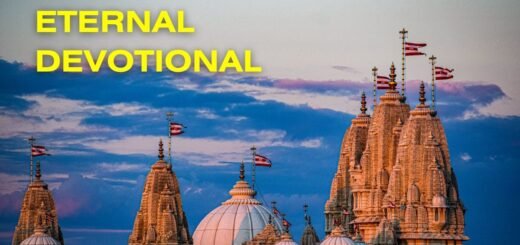How to do Dussehra Durga Pooja Ghatasthapana Procedure
See below for the How to do Dussehra Durga Pooja Ghatasthapana Procedure, Dussehra Durga Pooja Ghatasthapana Procedure, Pooja Significance, Timings, FAQs, and Details Here.
Celebrating Dussehra: The Durga Puja Ghatasthapana Procedure, Significance, Timings, FAQs, and Details
Dussehra is one of the great festivals in Indian Festivals and Culture. Celebrating Dussehra or Dasara is for the Victory of Good on Bad. The Celebrations of the Dasara Festival will be for different purposes. As per Ramayana and Mahabharatha Celebrating Vijayadashami is the most important. It marks the victory of good over evil and is observed as the day when Lord Rama defeated the demon king Ravana. In many parts of the country, Dussehra is also the beginning of the Durga Puja festivities, which culminate in the grand celebration of Navratri.
One of the most important rituals of Durga Puja is Ghatasthapana, the ceremonial installation of the Devi Durga idol. See below for the How to do Dussehra Durga Pooja Ghatasthapana Procedure and details in this comprehensive guide.
How to do Dussehra Durga Pooja Ghatasthapana Procedure at Home?
The Ghatasthapana procedure is a sacred and intricate ritual that involves the installation of the Devi Durga idol. Here’s a step-by-step guide on how to perform Ghatasthapana:
- Choosing the Right Time: Ghatasthapana should be done during the auspicious hours of the day, which are determined by the lunar calendar. Consult a priest or an almanac to find the most suitable timing for your location.
- Selecting the Ghata (Pot): The first step is to select a clay or earthen pot, known as a ‘ghata.’ It symbolizes the womb of Goddess Durga. Clean the pot thoroughly and decorate it with vermillion and turmeric paste.
- Preparing the Base: Place a small bed of sand or soil in the pot, and sow barley seeds on it. This represents the fertility of Mother Earth and the growth of life.
- Idol Placement: Place the Durga idol gently in the pot, ensuring it is seated properly. The idol should face east, the direction of the rising sun, symbolizing the goddess’s arrival.
- Decorating the Idol: Adorn the idol with flowers, garlands, and traditional jewelry. The goddess is often depicted with ten arms, each holding a weapon, symbolizing her divine powers.
- Lighting the Lamp: Light a lamp or diya near the idol to invoke divine blessings. Offer ghee or sesame oil to the lamp.
- Offerings: Prepare a thali (plate) with offerings like fruits, sweets, and betel leaves. Offer these to the goddess as a symbol of your devotion and gratitude.
- Chanting Mantras: Recite Durga Saptashati or other relevant mantras while performing the Ghatasthapana. Seek the goddess’s blessings and protection.
- Prayers and Aarti: Offer your prayers to Goddess Durga, expressing your wishes and seeking her guidance. Perform aarti with incense sticks and camphor.
- Maintaining the Ghata: Throughout the nine days of Durga Puja, ensure that the barley seeds are watered daily. The growth of the barley is considered an auspicious sign.
Significance of Ghatasthapana:
Let’s see the detailed procedure of How to do Dussehra Durga Pooja Ghatasthapana Procedure and the Significance of Ghatasthapana in the Durga Puja festival:
- Welcoming the Goddess: Ghatasthapana is the formal invitation to Goddess Durga to reside in your home or pandal for the duration of the festival. It symbolizes the arrival of the goddess and the beginning of her divine presence.
- Fertility and Prosperity: The pot filled with soil and barley seeds represents fertility and growth. It signifies the nourishment and prosperity that the goddess brings into the lives of her devotees.
- Protection and Blessings: Devotees believe that by performing Ghatasthapana, they invoke the protective and nurturing energies of Goddess Durga. It is believed to shield the devotees from negativity and bring blessings and happiness.
- Unity and Devotion: Durga Puja is a community festival celebrated with great fervor. Ghatasthapana unites devotees in their shared devotion to the goddess, fostering a sense of community and togetherness.
Click here for the 2023 Navaratri Ghatasthapana Durga Puja 2023 Dates Timings
Click here to book for Purohit or Pandit for Dussehra Durga Pooja Ghatasthapana
Timings for Ghatasthapana:
The timing of Ghatasthapana is crucial for its auspiciousness. It is determined based on the lunar calendar and varies from year to year. Generally, it is performed during the Pratipada or the first day of Navratri. Consult a priest or refer to a reliable Panchang (Hindu calendar) to find the specific timing for your location.
Frequently Asked Questions (FAQs):
- Can Ghatasthapana be performed at home?
Yes, Ghatasthapana can be performed both at home and in public pandals. It is a personal choice, and many families take pride in conducting this ritual within the confines of their homes.
- What are the materials required for Ghatasthapana?
You will need a clay or earthen pot (ghata), barley seeds, soil or sand, flowers, incense sticks, camphor, lamps or diyas, fruits, sweets, betel leaves, and traditional jewelry for the idol.
- Can anyone perform Ghatasthapana, or should it be done by a priest?
While a priest can guide you through the procedure, Ghatasthapana can be performed by anyone with devotion and sincerity. It’s essential to follow the steps correctly and chant the mantras to the best of your ability.
- What is the significance of barley seeds in Ghatasthapana?
Barley seeds symbolize fertility, growth, and abundance. The sprouting of barley during the festival is considered an auspicious sign and represents the blessings of Goddess Durga.
- How long should the Durga idol stay in the pot?
The Durga idol remains in the pot for the entire duration of the Durga Puja, which typically spans nine days.
- What should be done after Ghatasthapana is completed?
After Ghatasthapana, daily rituals like aarti, chanting of mantras, and offering of prayers and bhog (food offerings) are performed throughout the nine days of Durga Puja.
- What is the significance of facing the idol eastwards during Ghatasthapana?
East is the direction of the rising sun, symbolizing the arrival of positive energy and light. Placing the idol eastwards is believed to invite the goddess into your home with her divine blessings.
Conclusion:
Durga Puja Ghatasthapana is a sacred and joyous occasion that marks the beginning of the festive season in India. It is a time when devotees invite Goddess Durga into their homes and hearts, seeking her protection, blessings, and abundance. By following the traditional Ghatasthapana procedure, understanding its significance, and adhering to the auspicious timings, you can partake in this beautiful celebration of faith, unity, and devotion.
“This is the brief information about How to do Dussehra Durga Pooja Ghatasthapana Procedure and details”
Click here for the 2023 CIL MT Recruitment Apply Online Today

